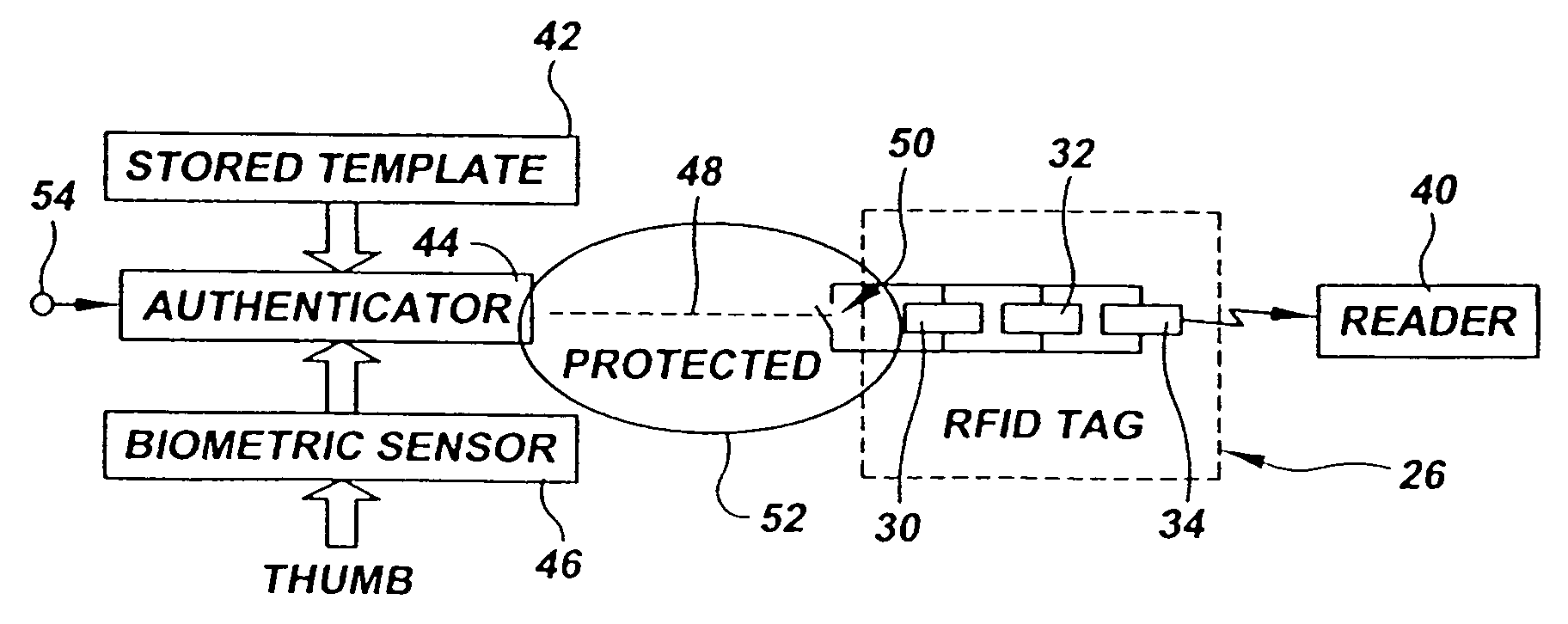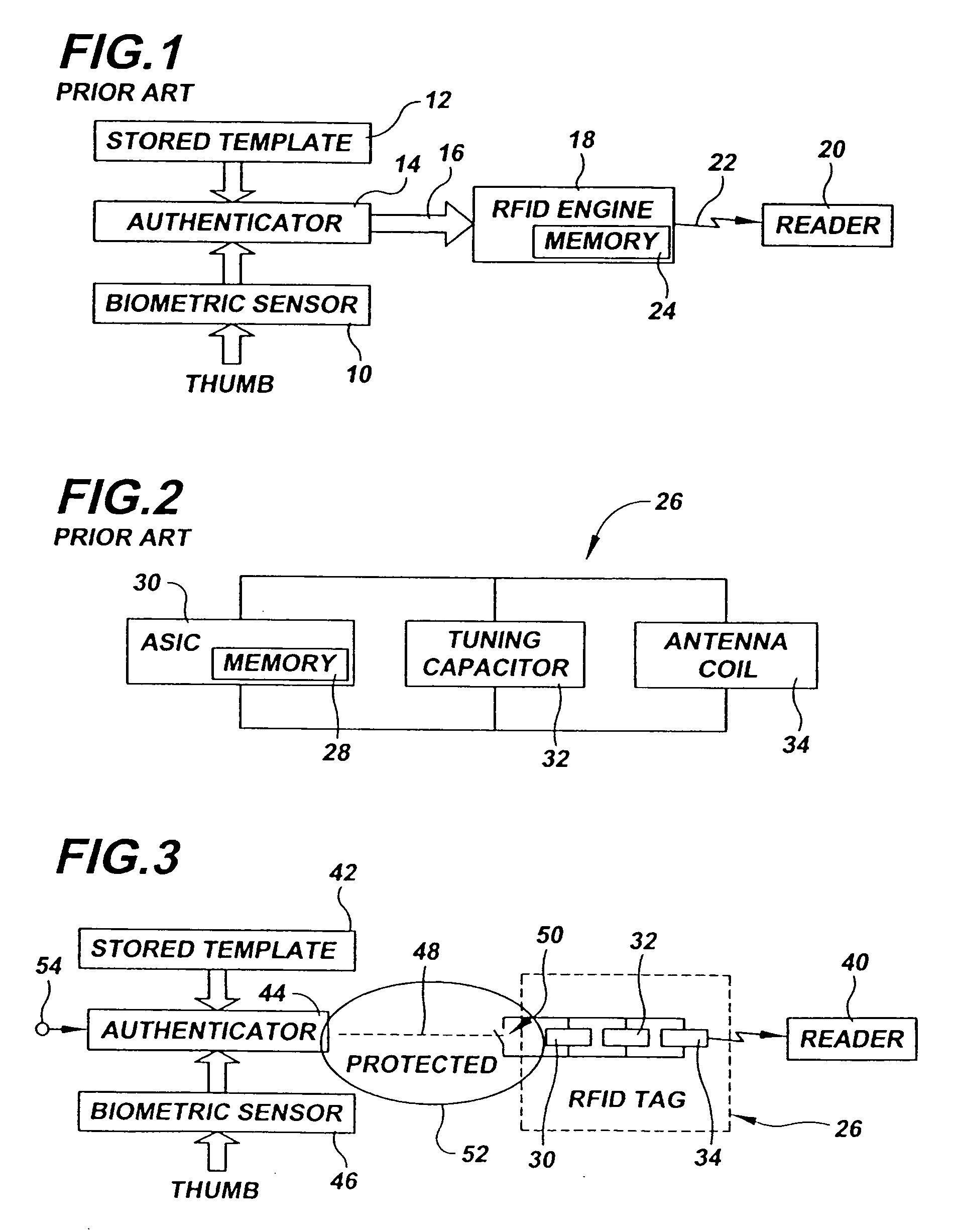Biometrically authenticated portable access device
a portable access device and biometric authentication technology, applied in the direction of program control, testing/monitoring control system, instruments, etc., can solve the problems of non-control, unauthorized users being presented to access the protected resource, and not allowing third parties to program the rfid tags used with their rfid system
- Summary
- Abstract
- Description
- Claims
- Application Information
AI Technical Summary
Benefits of technology
Problems solved by technology
Method used
Image
Examples
Embodiment Construction
)
[0027] In describing the preferred embodiment of the present invention, reference will be made herein to FIGS. 1-3 of the drawings in which like numerals refer to like features of the invention.
[0028] A block diagram of a typical prior art biometric key fob is shown in FIG. 1. An authorized user verifies his identity to the key fob using a biometric sensor 10. The biometric sensor is typically a semiconductor device capable of detecting the location of ridges forming a user's fingerprint as the ridges contact the sensor. In a conventional design, the user's thumb is applied to the biometric sensor, which produces a live authentication signature corresponding to the user's thumbprint.
[0029] A previously established authentication signature corresponding to the authorized user's thumbprint is located in stored biometric template 12. The authenticator 14 compares the live biometric parameter measured by the biometric sensor 10 to the stored biometric template 12 for the authorized u...
PUM
 Login to View More
Login to View More Abstract
Description
Claims
Application Information
 Login to View More
Login to View More - R&D
- Intellectual Property
- Life Sciences
- Materials
- Tech Scout
- Unparalleled Data Quality
- Higher Quality Content
- 60% Fewer Hallucinations
Browse by: Latest US Patents, China's latest patents, Technical Efficacy Thesaurus, Application Domain, Technology Topic, Popular Technical Reports.
© 2025 PatSnap. All rights reserved.Legal|Privacy policy|Modern Slavery Act Transparency Statement|Sitemap|About US| Contact US: help@patsnap.com


